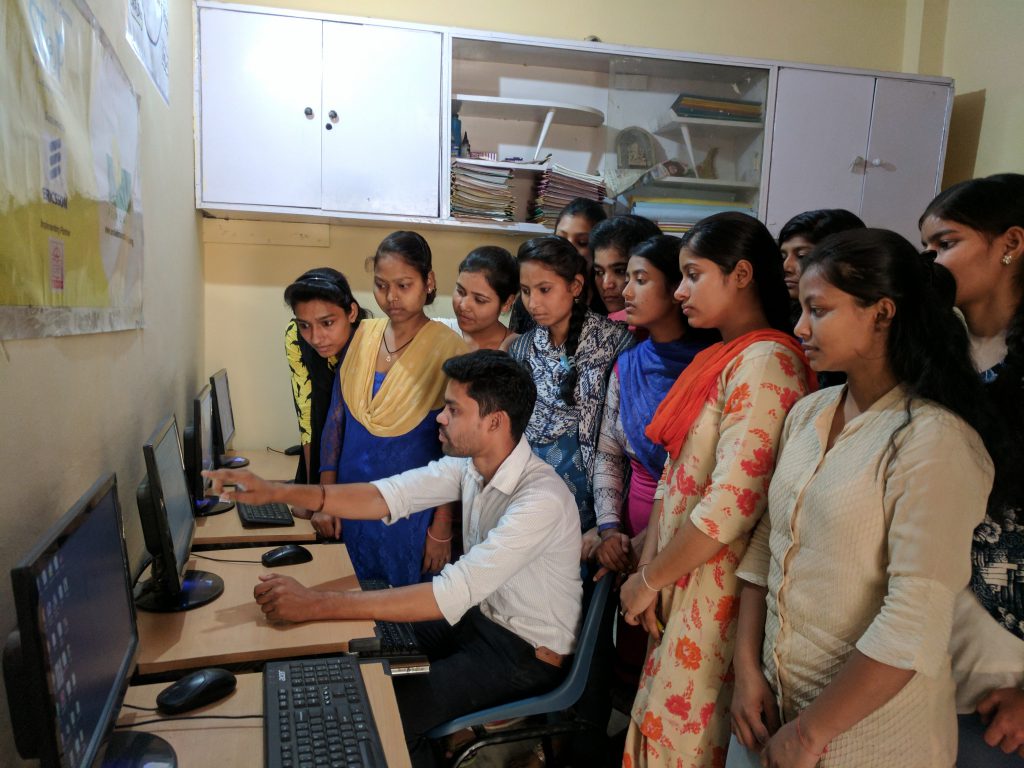As adults when we think back about our school days, we tend to vividly remember a few teachers over others. These are most often the teachers whose classes were interesting. A little thought about what made their classes special would point towards their teaching method which invariably was ‘student centric’. A story-telling session, a word-building exercise, a fun math game, a general knowledge quiz, or a role-play; it might have been any of these that made their classes stand out. We enjoyed these classes because we were actively involved in those classes. This is precisely what activity-based learning (ABL) is all about.
Activity-based Learning: Concept and Methods
In simple terms, activity-based learning refers to a teaching methodology where the subject matter is delivered through various activities that make learning more interesting and engaging. In this type of learning, the student is the center of the process and the teacher acts only as a facilitator, introducing and guiding them through the activities. Students learn independently and at their own pace.
Unlike conventional teaching where the teacher is the one who lectures and students are passive recipients, activity-based learning encourages children for the following:
- Engage: Children are involved in doing the activities designed and thus engage in their own learning process
- Experiment: There is no standard answer to be replicated, hence children get the scope to experiment and arrive at their own solutions to a given problem
- Explore: Learning through activities creates curiosity in children to investigate and find more information about a given problem/situation
- Express: When children are thoroughly involved in the learning process it enables them to express their findings/ learning more confidently
Activity-based learning can be imparted in a number of ways. Activities can be designed based on the composition of the class and the subject to be taught. The most common way of activity-based teaching is through group work or group discussion where a class of students is divided into some groups and activities are assigned to them. Each group tries to solve the problem or finish the activity by interacting among themselves.
Besides this, puzzles, games, role play, skits, story-telling, demonstrations using real objects, taking students on an educational tour, playing a subject-related video, and showing a documentary in the classroom are all examples of activity-based learning/teaching methods.
Activity-based Learning: Benefits and Challenges
Every individual has the maximum learning potential in his/her childhood because 90% of brain development happens by the age of 5 years. Childhood is a crucial stage as the first 8 years of life build the foundation for health, learning, and overall life success in the future. This emphasizes the need to choose the right strategy to teach children so that their potential is optimally utilized.
It is a well-known fact that children are playful by nature. However, they are spontaneous and have a short attention span. Thus Activity-based learning (ABL) is inevitably one of the best ways a child can acquire and retain knowledge.
Some of the Key Benefits of Activity-based Learning are listed below:
- Ensures better participation of kids in the learning process: When the children are given an activity they are both physically and mentally involved in it thus engaging multiple faculties which provides better stimulation of senses and in turn better learning.
- Leads to deeper learning and understanding: As the old proverb goes, ‘I hear and I forget. I see and I remember. I do and I understand.’ Thus, ABL always gives a deeper insight into the subject matter as children learn through experimentation. They have the scope of making mistakes too and hence gather genuine learning.
- Encourages creativity and out-of-box thinking: Learning through activities provides an excellent platform for children to come up with innovative ideas for the same problem. Creativity and out-of-box thinking are rewarded and encouraged in this type of learning.
- Builds team spirit and social skills: When the children are grouped together to perform a task, they collaborate with each other to successfully complete it, thus eventually learning the essence of teamwork. This also builds their social skills and value system.
- Helps to put learning into context: A key feature of activity-based learning is that it helps children apply their learning in real-life situations, thus establishing the relevance and utility of learning resources and materials.
- Leads to better knowledge retention: Since students learn through exploring and experimenting themselves, the learning becomes an output of experience and has clarity and thus stays with the student.
Though activity-based learning has some undisputed benefits, it has its own set of limitations too. Time constraints to design and coordinate activities, indiscipline in students and inconvenience due to the physical environment of the classroom, or disinterest from students who are not aligned to participate in a particular activity can be other challenges in activity-based learning. Also, some subjects are more complicated to be adapted to relevant activities.
Project-Based Learning: Meaning and Advantages
Project-based learning (PBL) is deeper, more detailed, and more complex than activity-based learning. In this teaching method, students are presented with a complicated problem, challenge, or question and asked to find the solution to the same by conducting their own research.
The problems presented are usually real-time problems and students are expected to design workable solutions. A project needs detailed research, and the use of diverse skills and takes more time to completion and execution than any form of traditional academic coursework.
Project-based learning prepares students for real-life situations and increases their workplace readiness too. Moreover, a single project might demand the students to integrate knowledge and information from multiple academic subjects and skill areas, thus giving scope for in-depth investigation and analysis of the problem in question. It boosts the creativity, critical & analytical prowess, and communication and collaboration skills of an individual.
E-learning Education Programme and its Advantages
E-learning or virtual learning has practically revolutionized the education landscape by transforming the process of acquiring knowledge. E-learning education programmes which include online courses, webinars, learning forums, podcasts, video streaming services, etc. are helping educators and students alike by facilitating innovative teaching and learning methods.
For example, a teacher can explain some concepts better with the help of an educational video, or students from different schools can participate in a seminar and interact with subject experts without anyone having to actually travel to a common location.
It was through E-learning that education in schools and colleges could continue during the pandemic. Now, students can study and even obtain a college degree from a foreign university without even having to leave their homes. In project work too, students find it convenient to research online as the internet offers unlimited resource materials anywhere and anytime.
Donate for Education in India
Education holds the key to a great future. While some students are making breakthroughs in the field of education with the help of modern aids, there are poor and marginalized kids who still do not have access to even basic education. NGOs like the Smile Foundation are dedicatedly working to ensure that every child receives the gift of education. As responsible citizens of the country, you can support this cause. Donate for education and help in building an empowered India.









